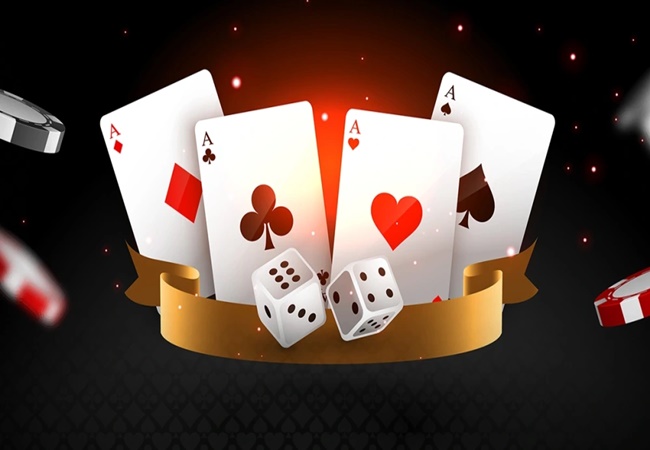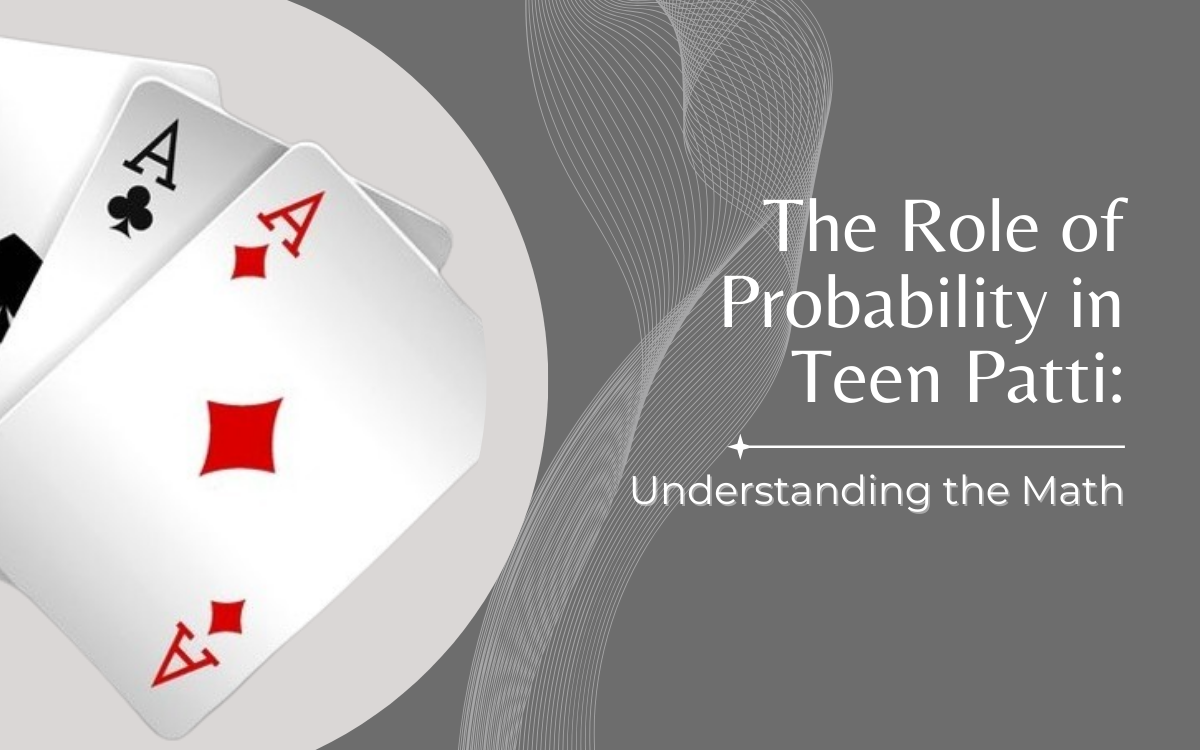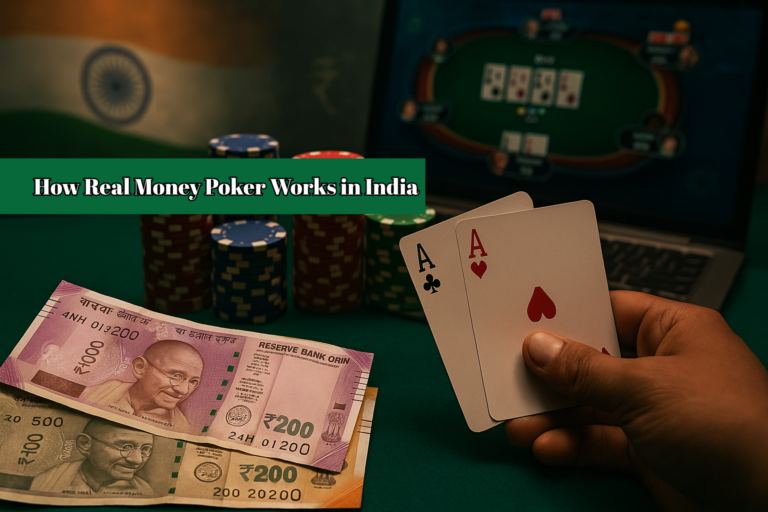The Role of Probability in Teen Patti: Understanding the Math
Teen Patti, often referred to as “Indian Poker,” is a game of skill, psychology, and probability. While luck plays a significant role in determining short-term outcomes, understanding probability can help players make better decisions, maximize winnings, and minimize losses over time. This article delves into the role of probability in Teen Patti and how mastering the math behind the game can give you an edge over opponents.
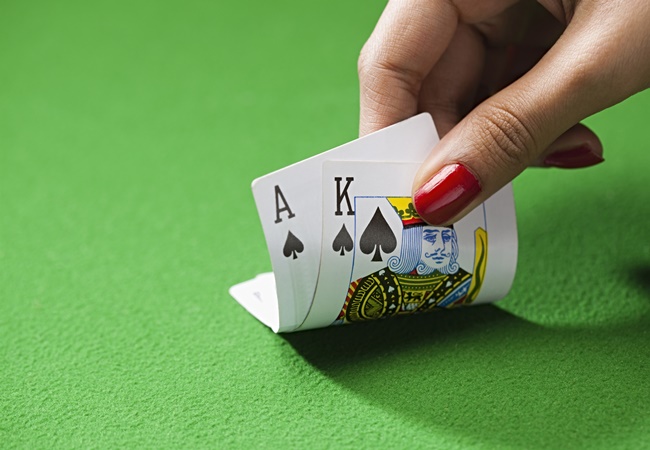
Understanding Probability in Teen Patti
Probability is the branch of mathematics that deals with the likelihood of different outcomes occurring. In Teen Patti, this concept helps players assess the chances of forming specific hands, estimate opponents’ possible cards, and make informed betting decisions. By understanding probability and recognizing patterns in Teen Patti, a player can determine whether to call, raise, or fold based on statistical likelihood rather than mere intuition.
The Basics of Teen Patti Hands
Teen Patti is played with a standard 52-card deck, and each player is dealt three cards. The possible hands, ranked from highest to lowest, are:
- Trail (Three of a Kind) – Three cards of the same rank (e.g., AAA, KKK).
- Pure Sequence (Straight Flush) – Three consecutive cards of the same suit (e.g., 5-6-7 of hearts).
- Sequence (Straight) – Three consecutive cards of different suits (e.g., 4-5-6 of mixed suits).
- Color (Flush) – Three cards of the same suit but not in sequence (e.g., 2-5-9 of diamonds).
- Pair – Two cards of the same rank (e.g., QQ, 77).
- High Card – When none of the above hands are formed, the highest card determines the winner (e.g., A-K-9 where Ace is the highest).
Understanding the probability in teen patti of receiving these hands is crucial to improving gameplay.
Probability of Getting Different Hands
Since each player is dealt three random cards from a 52-card deck, the probability of forming each type of hand is as follows:
- Trail (Three of a Kind): 0.24% (1 in 424 hands)
- Pure Sequence (Straight Flush): 0.22% (1 in 459 hands)
- Sequence (Straight): 3.26% (1 in 30 hands)
- Color (Flush): 4.96% (1 in 20 hands)
- Pair: 16.94% (1 in 6 hands)
- High Card: 74.39% (most common hand)
These probabilities suggest that receiving a high card hand is far more likely than getting a premium hand like a trail or a pure sequence. Understanding probability in Teen Patti can help players gauge the relative strength of their hand and adjust their strategy accordingly.
Applying Probability to Strategic Decision-Making
Bluffing and Probability
Bluffing is a key element in Teen Patti, but successful bluffing requires a strong understanding of probability, especially when playing on Teen Patti apps. If you have a weak hand, but your opponent is also likely to have a weak hand (based on probabilities), bluffing might be an effective strategy. However, if the likelihood of your opponent having a strong hand is high, bluffing can be risky.
For instance, if you hold a low-value high card hand (e.g., 2-5-9), the probability of another player holding a pair or better is approximately 25%. This means that in most cases, bluffing may not be effective unless you have a strong read on your opponents’ tendencies and understand probability in Teen Patti.
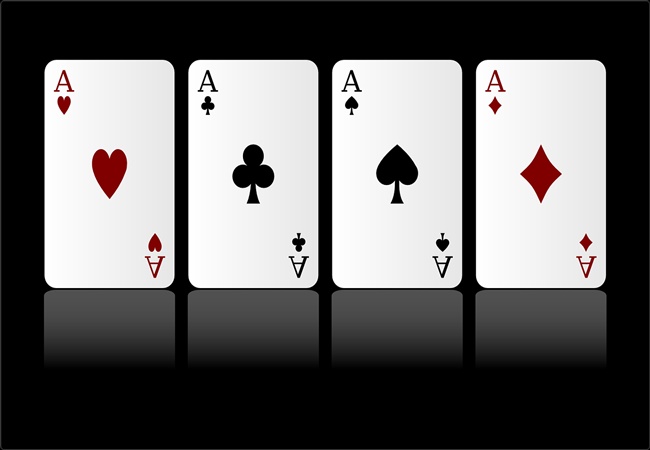
Betting Based on Expected Value (EV)
Expected value (EV) is a key concept in probability in teen patti that measures the potential long-term benefit of a decision. In Teen Patti, EV helps players determine whether a bet is profitable over time. The formula for EV is:
EV = (Probability of Winning × Potential Winnings) – (Probability of Losing × Amount Risked)
For example, if you have a pair and estimate a 50% chance of winning a pot worth 100 chips, while risking 30 chips, your EV is:
EV = (0.50 × 100) – (0.50 × 30) = 50 – 15 = +35 chips
Since the EV is positive, making the bet is a profitable decision over the long run.
Probabilities of Opponents’ Hands
A skilled Teen Patti player also considers the probability of opponents holding stronger hands. For example, if you have a sequence (e.g., 6-7-8), the likelihood of an opponent having a higher sequence (e.g., 7-8-9) or a pure sequence decreases as the number of possible card combinations is reduced. Understanding the likelihood of stronger hands and probability in Teen Patti allows players to confidently bet, fold, or raise.
The Impact of Probability on Different Variants of Teen Patti
Playing Teen Patti has several popular variations, each of which changes the role of probability. Here’s how probability influences some common versions:
- Muflis (Lowball Teen Patti): In this version, the lowest-ranking hand wins. Probability analysis shifts since weaker hands (like high cards) are now the most valuable.
- AK47: In this version, Aces, Kings, Fours, and Sevens are wild cards. This increases the probability of forming strong hands, making aggressive betting strategies more viable.
- Joker (Wild Cards): Games with wild cards significantly alter probabilities since players can more easily form trails, sequences, or flushes. Calculating new probabilities based on available wildcards is crucial.
Conclusion
Probability in Teen Patti is not purely a game of chance—it plays a significant role in helping players make strategic decisions. By understanding the likelihood of forming different hands, estimating opponents’ hands, and using expected value calculations, players can develop a more refined approach to betting and bluffing. While no strategy guarantees success in every game, leveraging probability increases long-term profitability and enhances overall gameplay. The next time you play Teen Patti, keep these probability in Teen Patti principles in mind, and you’ll gain a competitive edge over your opponents.
